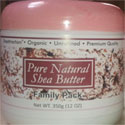Cassava can be fed to virtually any kind of livestock. Research reports indicate it can prove especially economical in feeding pigs and poultry – IF properly balanced with proteins and vitamins, which it is deficient in. This article discusses 3 forms in which Cassava can be profitably fed to livestock.
Today, rising feeding costs make it imperative that smallholder farmers explore practical ways to extract benefits from every feed ingredient. Cassava occurs in various forms, and offers potentially useful benefits to those willing to put it to use.
I argue that profit focussed smallholder farmers looking to maximise output, while reducing costs, can intelligently explore use of Cassava in its various forms.
Below, I discuss a few examples…and end by offering suggestions you can use.
1. Cassava Peels:
Pigs love Cassava peels. Many homestead farmers make ready use of cassava peels to feed their small stock.
Cattle, sheep and goats also respond well to feeing with cassava roots (cooked or raw). But not as well as pigs.
A client who runs an integrated farm regularly feeds his pigs with uncooked cassava peels, and they relish it. This has been the major feed, in addition to Moringa leaves and branches, with which the pigs are fed. And they’ve shown consistent improvement in growth and reproductive rates.
Sadly, due to absence of daily production records relating quantity/type of feed, with weight increases, and litter sizes etc, it’s not easy to accurately establish the impact of this approach.
2. Gari (Cassava Flour):
Research studies confirm that Gari (Cassava flour) – which is made from peeled Cassava roots – is a valuable, yet cheap source of carbohydrates for man and livestock. This makes it a useful energy source for livestock ration formulation.
It would however appear that some farmers are thinking of smarter ways to use it…
For instance, last year, I spoke on phone (while conducting a questionnaire survey for my international agribusiness research paper) with an enterprising farm owner, who is making interesting use of Gari on his fish farm.
He told me he successfully formulates rations for his Catfish using 40% Gari.
And he asserts that performance has never been better. According to him, the farm turns out about 25,000 catfish fingerlings and 5,000 table sized adults monthly!
The result he reported was surprisingly similar to one that I’d read about….
A study by V.A. Oyenuga found that up to 40% inclusion of raw cassava, in the diet of young pigs produces better results, than when conventional grains based carbohydrate sources are used.
Above that threshold however, negative returns set in.
It is worthy of note that this farmer emphasized to me, that he diligently conducts laboratory analyses of feed ingredients bi-monthly. This enables him get the nutrients balancing right during formulation.
When one considers that Gari has much lower protein, oils, and crude fibre contents, taking such an important precaution cannot be over emphasized.
NB: I feel a need to note here that this farmer’s attitude of paying close attention to details, and exploring use of alternative low cost ingredients on a micro scale, is what I’m advocating more smallholder farmers adopt!
3. Cassava Based Factory Wastes:
Cassava based factories generate waste (e.g. from starch production), and may welcome farmers willing to pick up such waste at low to zero cost, for feeding their livestock.
As is obvious from the earlier mentioned examples, Cassava can be used in different forms for livestock.
However, considering the economic importance of the Cassava roots to man, for food, smallholder farmers may find it most worthwhile to focus on maximizing their use of Cassava waste products e.g. peels and leaves…
[NB: In contrast to the Gari – which is produced from the root – studies have shown that Cassava leaves are quite rich in oil, ash, ascorbic acid and proteins – with moderate carbohydrate content. This has led to suggestions that the leaves may be potentially useful as “protein supplement” for ruminants.]
Cassava waste can be used for direct feeding, or in compounded rations.
However, for definite best practice benefits to be derived, I believe farmers who choose to use it, will need to adopt proper data recording routines.
This will enable them – over time – measure and analyze the performance of the animals in relation to what they are fed.
What they learn can guide them in making needed modifications etc.
A Potential Danger to Watch Out For
The attraction of Cassava is based on the fact that it is a cheap carbohydrate source.
However, all who plan to use it must always keep in mind the fact that it contains anti-nutritional factors and toxins that can harm livestock if not properly handled.
For instance, its juice contains a cynanogenetic glycoside, called Linamarin which when acted upon by an enzyme called Linase, breaks down into – poisonous – Hydrocyanic acid (i.e. HCN – a cyanide).
This HCN, when consumed, can result in death of livestock (and even humans).
The two-stage fermentation process to which Cassava is subjected in making Gari eliminates this toxic HCN acid.
That’s why improperly processed Gari may pose dangers to both man and livestock.
So, when Gari is to be used in formulating rations for Catfish (as one farm owner mentioned above does), it would always be wise to check and ensure it is of the right quality.
Final Words
Research studies indicate Cassava peels contain a higher content of HCN acid than the roots(from which Gari is made).
Interestingly, here in Africa, homestead pigs, goats, sheet are regularly fed cassava peels with no apparent side effects.
Whether or not this affects the animals negatively in any specific way, is however hard to say.
Only a proper study of the performance of production focussed stocks will yield conclusive findings.
Once again, it is my considered opinion, that farmers are probably best placed to investigate this on their farms. Rather than wait for researchers whose priorities may lie elsewhere.
Further Reading
1. Nigeria’s Foods and Feeding Stuffs: Their Chemisty and Nutritive Value – by Oyenuga V.A
2. Tayo Solagbade’s Practical Livestock Feed Formulation Handbook
3. Toxic substances and antinutritional factors (FAO)
4. An overview of traditional processing and utilization of cassava in Africa (FAO)









Warning: count(): Parameter must be an array or an object that implements Countable in /home1/tayoswdg/public_html/sdnuggets/wp-includes/class-wp-comment-query.php on line 399